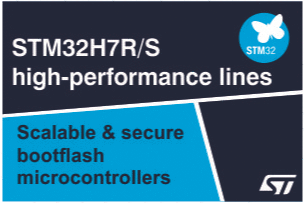An ultimate light source
With the introduction of SONY XEL-1, an 11 inch TV with an OLED screen of only 3mm thickness, there is a high acceptance of this technology in the market. Knowing OLEDs great potential, research has been done and now proved as an ultimate light source for many applications. In this ar ticle the potential benefits of OLEDs in lighting applications has been explained.
Take a look at your cell phone; do you see a display that saves your battery and doubles as a mirror? When you dream of your next TV, are you picturing an unbelievably thin screen that can be seen
perfectly from any viewing angle? If you buy a movie two decades from now, will it come in a cheap, disposable box that continually plays the trailer? These three products are all applications of organic light emitting devices (OLEDs). OLEDs are amazing devices that can be modified through even the smallest details of chemical structure or processing and that have a variety of applications, most notably lighting and flexible displays.
OLEDs for Lighting
Cold light, i.e. conversion of electrical energy into visible light other than incandescent sources, that allows for high efficiency and fully customized in form, color and appearance has been a dream for long time. The realization is now within reach with Organic Light Emitting Diodes (OLEDs).OLEDs have been researched for 15 years with major emphasis on display applications. Now a certain level of maturity has been reached, such that first products are being introduced in the market.
However, the potential of OLED technology is much larger than what has been discovered so far, and ranging far beyond the application in matrix displays. OLEDs have the potential for high efficiencies at high brightness, freedom in shape and color combinations, and a variety of appearances from opaque-white over mirror like to even fully transparent and full tunability in brightness and color. With a number of breakthroughs in materials, optics and production technology, OLEDs could become the ultimate light source for many applications, especially Liquid Crystal Display-backlighting, signage, signalling, advertising and emergency lighting. On the long term OLEDs will become the next generation light sources, replacing in about 10 to 15 years time the currently used incandescent and fluorescent lights. OLLA is the first step towards reaching this goal. To reach this challenging target, project partners will develop new high-efficient materials, research in parallel the most suitable architecture and cost effective processing technology and will build demonstrators, to demonstrate the full spectrum of opportunities with OLEDs. Via the OLLA project, the world-class industrial, institutional and academic partners integrate their resources for R&D, in order to make a fast breakthrough in OLED technology possible, and to be able to bring European OLED applications solutions timely on the world market.
OLED Characteristics
Solid state lighting, or the direct conversion of electrical energy into light by organic and inorganic semiconductors, has the promise of much more Solid state lighting, or the direct conversion of electrical energy into light by organic and inorganic semiconductors, has the promise of much more efficient lighting options.
Technology roadmaps predict efficacy figures in the near future which even go beyond the 100 lumen per Watt of most fluorescent lighting systems. Inorganic LEDs are already near 60 lm/W for commercial applications, and OLEDs show laboratory figures in the range 20 40 lm/W, approaching the level of compact fluorescent bulbs.
In contrary to inorganic LED’s, which are pure point sources, OLEDs are large area sources with broadband emission, giving a very nice and pleasant light from all viewing angles. Furthermore, OLEDs are the first real flat light sources, with a thickness of only the glass substrate. In future OLEDs could also be made on flexible films and could even be made (semi) transparent in the off state. This offers a wide range of novel design and application options, especially as also the shape of the emitting area can be designed. And as they are diode lights, OLEDs can be fully dimmed and switched on in high frequencies without problems. All these characteristics together make OLEDs the dream candidate for next generation consumer lighting.
Working Principle
OLEDs work by the principle of electro- luminescence.
Positive and negative electronic charges are injected respectively from anode and cathode into a stack of very thin organic layers. The thickness of the layer stack typically ranges from 80 to 200 nanometers.
Once a voltage is applied from 3 to 5 volts the charges migrate through the layers and create excitation when recombination takes place. This excitation could release its energy by sending out a photon with a certain probability. The higher this probability is, the more efficient the OLED device. Two basic types of OLED systems exist: polymer OLEDs and low molecular weight OLEDs. Polymer OLEDs are made of long chains of repeating structures and are deposited out of a solution. This solution processing limits the number of active layers to one layer for all functions, but also bears the advantage of mass reproduction by e. g. gravure printing.
Small molecule OLEDs are made via evaporation of materials under high vacuum. By putting several different layers on top of each other, much more complicated stacks can be made. Each layer has a different work function, and different emitting layers can be put on top of each other.
Performance Metrics
The general illumination lighting market sets high targets which have to be met simultaneously: high efficiency, long lifetime at high brightness’s, illumination light quality, and of course low costs. Today’s OLED performances are still far away from this, but for less demanding lighting applications, such as signage and signaling OLEDs are already reaching market requirements. Especially in monochrome colors red and green, OLEDs perform already very well. Efficacies of 130 lm/W in green have already been achieved, which is beyond the best figures of inorganic LED’s.
Literature also reported lifetimes of several millions of hours for red devices at low brightness levels. These records are achieved with phosphorescent emitter materials, which deliver 3 times more photons than fluorescent materials.
White light can be generated by mixing two or more colors of light, e. g. blue and yellow, by down conversion of blue light with phosphors or by combining the primary RGB color emitters. Unfortunately, no stable and high efficient blue phosphorescent OLED emitters are found yet, therefore mixtures of both systems are currently used for generating white light. But luckily not much blue is needed to make a good white light.
Another important metric for lighting is the quality of the light source, or simply said, how well the light source reflects certain preselected colors. This is defined as Color Rendering Index (CRI), which usually has to be at least over 80. As OLED emitters are broadband emitters, this target is not very difficult to meet, as long as 3 colors are combined. This is not often the case in cheap inorganic LEDs, where blue with single phosphors are widely used for white light generation.
Research Challenges
Worldwide research is ongoing to create high- brightness, highly efficient and long living OLEDs. It is the main challenge for OLED lighting to grow the level of fluorescent light systems, otherwise it will be difficult to get to the market. The lighting giants Osram, Philips, and GE are all working on OLEDs. Challenging research targets of 100 lm/W in the year 2010 are set, with lifetimes over 20,000 hours.
Costs
At the moment OLED lighting panels are very expensive; at least a factor 100 to 1,000 too high for mass applications. The reason is that current OLED devices are nearly hand made on expensive research tools. Production has not started, as no one is willing to pay display prices for just a lamp. Once large volume production equipment will be used, it will lower total device costs and greatly accelerate the adoption of OLED lighting.
Also new coating options are considered, including flexible foils instead of glass. But all foils are still too permeable for water and moister, causing quick degradation of the OLED materials inside the foils.
It will just take time before the selected substrates with a suitable mass manufacturing process will be settled.
Conclusion
With the massive research investments going on, it is clear that over time OLED lighting technology will develop in a next stage and will become ready for the lighting market.
Since OLEDs can be very beneficial to our society both economically and environmentally, there is no doubt that their presence in the market will continue to increase.






